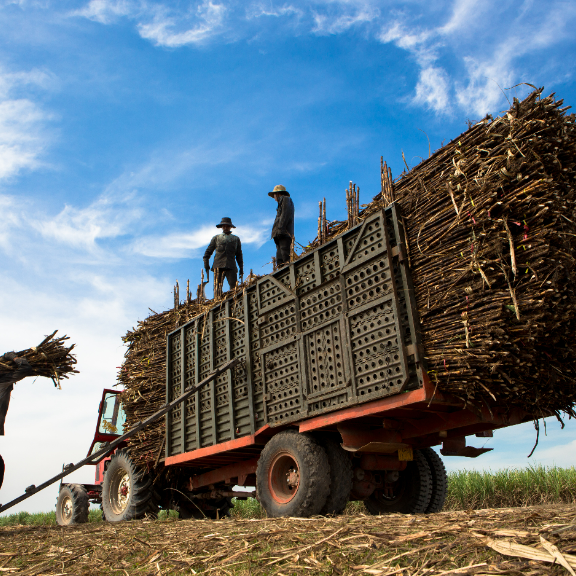Minimizing Post Harvest Losses
The period immediately following sugarcane harvesting is critical, as post-harvest losses can significantly impact both quantity and quality. Implementing effective strategies to minimize these losses is essential for maximizing the return on investment and ensuring the success of your sugarcane cultivation. Here's a comprehensive guide on minimizing post-harvest losses:
**1. Rapid Transportation: Time is of the essence in preserving the sugar content of harvested cane. Ensure swift transportation from the field to the processing facility. Delays can lead to sucrose inversion and a decrease in overall sugar quality.
**2. Proper Loading and Unloading: During transportation, handle harvested sugarcane with care. Proper loading and unloading procedures prevent damage to the cane, preserving its structural integrity and sugar content.
**3. Effective Cleaning and De-Trashing: Before harvesting, and during post-harvest handling, ensure thorough cleaning and de-trashing. Removing debris and trash not only aids in efficient harvesting but also prevents contamination and deterioration of the sugarcane during transportation.
**4. Temperature Control: Maintain an optimal temperature during transportation and storage. Sugarcane is sensitive to temperature fluctuations, and exposure to high temperatures can accelerate sucrose inversion. Proper temperature control preserves sugar quality.
**5. Avoiding Prolonged Storage: Minimize the time between harvesting and processing. Prolonged storage can lead to sucrose losses and an increase in impurities. Aim for direct delivery to the processing facility whenever possible.
**6. Regular Quality Checks: Implement regular quality checks on harvested sugarcane. Utilize tools such as refractometers or Brix meters to monitor sugar content. Identify and separate lower-quality cane to prevent it from affecting the overall sugar production.
**7. Efficient Processing Practices: In the processing facility, streamline operations for efficiency. Ensure that machinery is well-maintained and calibrated. Optimize extraction processes to extract maximum juice from the cane, reducing losses.
**8. Investing in Technology: Explore technological solutions for post-harvest handling. Modern technologies, such as real-time monitoring systems and automated sorting equipment, can enhance efficiency and reduce losses during transportation and processing.
**9. Education and Training: Empower workers with the knowledge and skills needed for effective post-harvest handling. Training programs on proper loading and unloading techniques, quality checks, and machinery operation contribute to minimizing losses.
**10. Storage Infrastructure: If storage is necessary before processing, invest in appropriate infrastructure. Implement proper ventilation and temperature control systems in storage facilities to prevent deterioration of the sugarcane.
**11. Market Timing: Consider market conditions when planning harvesting and transportation schedules. Aligning your activities with peak market demand can help reduce the need for storage and minimize losses associated with delayed sales.
**12. Collaboration with Stakeholders: Establish effective communication and collaboration with all stakeholders in the supply chain. Coordinate with transportation providers, processing facilities, and market distributors to ensure a seamless and efficient process from the field to the market.
**13. Record Keeping: Maintain detailed records of post-harvest activities. Track transportation times, storage conditions, and processing efficiency. Analyzing this data over time can reveal insights and opportunities for further optimization.
**14. Sustainable Practices: Consider sustainable post-harvest practices. Implementing eco-friendly solutions, such as composting or recycling waste materials, not only reduces environmental impact but can also contribute to overall efficiency.
**15. Continuous Improvement: Post-harvest handling is an evolving process. Regularly review and reassess your post-harvest strategies. Embrace innovations and advancements in agricultural technology to stay at the forefront of efficient post-harvest practices.
In conclusion, minimizing post-harvest losses requires a holistic and strategic approach. By combining proper transportation practices, efficient processing, education, and embracing technological solutions, sugarcane farmers can significantly reduce losses and maximize the economic returns from their harvests.

